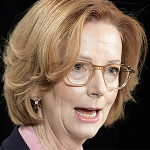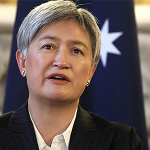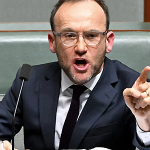‘Consolidation’ is the word on Lib Dem lips today, as the party mulls its solid, if not spectacular, progress in Thursday’s local elections. Ed Davey’s troops gained more than 100 council seats and added two more authorities to their existing tally of ten. Sir John Curtice, the elections expert, suggests they ‘had only a modest night’. He puts the party’s ‘disappointing’ projected national share of the vote at 17 per cent– three percentage points down on 2023.
This, some Lib Dems counter, is unfair. In 2023, there were more than 8,000 council seats up for grabs; this time there were just 2,600. This week’s elections tended to be in more ‘red wall’ or metropolitan areas where the primary challenge to Tory rule is from Labour, not the Liberal Democrats. Their strategy is less about the national picture than the other main parties too, especially after the disaster of the 2019 election. Now, they are ‘laser-focused’ on the 80 seats in the south of England where the party came second to the Conservatives. As the Lib Dems know from bitter experience, under first past the post, concentration means representation.
This week’s gains in places like Kent, Surrey and Hampshire are part of Davey’s focus on targeting disaffected Tories in the so-called ‘blue wall’ areas. In time-honoured Lib Dem fashion, this is done at local elections by building up the councillor base to ensure that, ward-by-ward, they can win parliamentary seats at the general election. It is less about conquering virgin territory and more about reinforcing the party’s standing in key target areas. So often has Davey worn his wellington boots on campaign visits in Oxfordshire that staff have been forced to buy him a replacement pair.
Thursday’s results were therefore about maximising the party’s chances in Tory-held marginals. In Winchester, where Steve Brine is standing down, the Lib Dems now hold 33 of the 45 wards. In Woking, the Lib Dems now hold 24 of the 30 seats, with Michael Gove’s election agent among those who lost their seats. The Lib Dems also captured Tunbridge Wells, where they now boast 22 of the 39 councillors. Once, ‘disgusted of Tunbridge Wells’ was a diehard Tory – now he is voting Liberal Democrat. On a good night they will overturn Greg Clark’s 14,645 vote majority here.
The big question for the general election is whether the Lib Dems can finally exorcise their coalition demons by turning the West Country yellow again. In 2015, 2017 and 2019, much of Cornwall, Devon, Dorset and Somerset voted Tory, thanks to Nick Clegg, Vote Leave and Jeremy Corbyn respectively. Yet there are now signs that this territory could go yellow once more. There are 15 constituencies in the West Country with smaller majorities than the Somerton seat which the Lib Dems took last summer.
In Cheltenham, the Tories were wiped out, with 36 of the 40 councillors now committed to replacing incumbent Alex Chalk. In Gloucester, the Liberal Democrats ended the day with 17 seats while the Conservatives came in second with 11. But it was Dorset – an authority which the Lib Dems have never held in 50 years before – which has prompted real talk of a ‘West Country revival’ after the party won in 42 of the 82 wards overall. Some Tories are skeptical, arguing that such claims ‘do not ring true’ when one considers the Police and Crime Commissioner elections for both Avon and Somerset and Devon and Cornwall.
For Ed Davey and his team though, they will be cheered overall. With months to go before a general election, they will argue that they are exactly where they need to be – making marginals into yellow strongholds and making Tories’ lives a misery.









